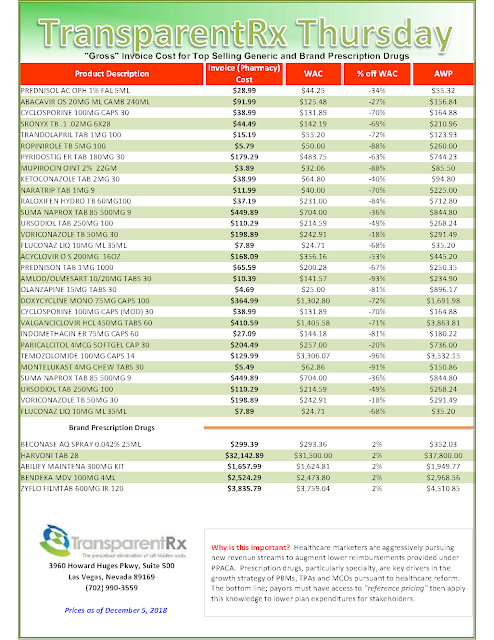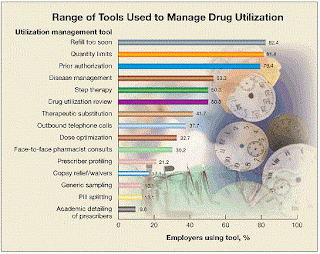Under the new model, CVS Health will return 100% of drug rebates to employer-sponsored groups and at some point in the future government health programs. The good news is this moves the entire industry one step closer to radical transparency. The bad news is CVS Health admits it hoodwinked all those clients it sold pass-through arrangements. Those so-called pass-through agreements were nothing more than fee-for-service [opaque] pricing models disguised as pass-through contracts.
It’s safe to assume Caremark’s (CVS Health’s PBM) gross margins will grow next year or worst case remains flat. Shareholders wouldn’t have it any other way. So it begs the question, “how?” Here are a few ideas:
1) Higher admin fees
2) Higher clinical fees
3) Leveraging the DUM toolkit to shift costs to medical drug spend in hospitals, clinics, and home infusion
4) Bigger push into urgent care through their Minute Clinics and overcharge for drugs under the medical spend
5) Larger ANRPs or Average Net Realized Price which represents the list price minus any discounts or rebates
6) Let’s not forget about drug rebates on the medical side. Are these rebates covered under the new model?
There are a host of others but one thing is certain. This new model, which isn’t new at all, doesn’t see the light of day without the acquisition of Aetna. For employers, brokers and benefits consultants there is a trade-off for radical transparency.
Services for which you’ve been accustomed to receiving for “free” will no longer be free. I have been preaching this for a decade and won’t stop even when some balk at our $5,000 price tag for a re-pricing. The truth has value and to this point non-fiduciary PBMs have hidden it [the truth] in rebates, for example.
That claims re-pricing you rely so heavily upon, which often times doesn’t hold as much value as the paper it is printed on, will have much more value. It’s free because it’s junk or at the very least a misrepresentation of facts. With more value comes a price tag which reflects that value.
One might assume with PBMs offering more transparency the burden for purchasers of PBM services to be skilled stewards of the pharmacy benefit has been lessened. Nothing could be further from the truth.
You will have greater access to information but do you have the skills to interpret it? More importantly, do you have a plan to execute on this information? Knowledge and execution will create a competitive advantage for your company.
It’s imperative to understand, beyond a functional role, how to effectively manage pharmacy benefits. We have a saying in this country, “you get what you pay for.”










